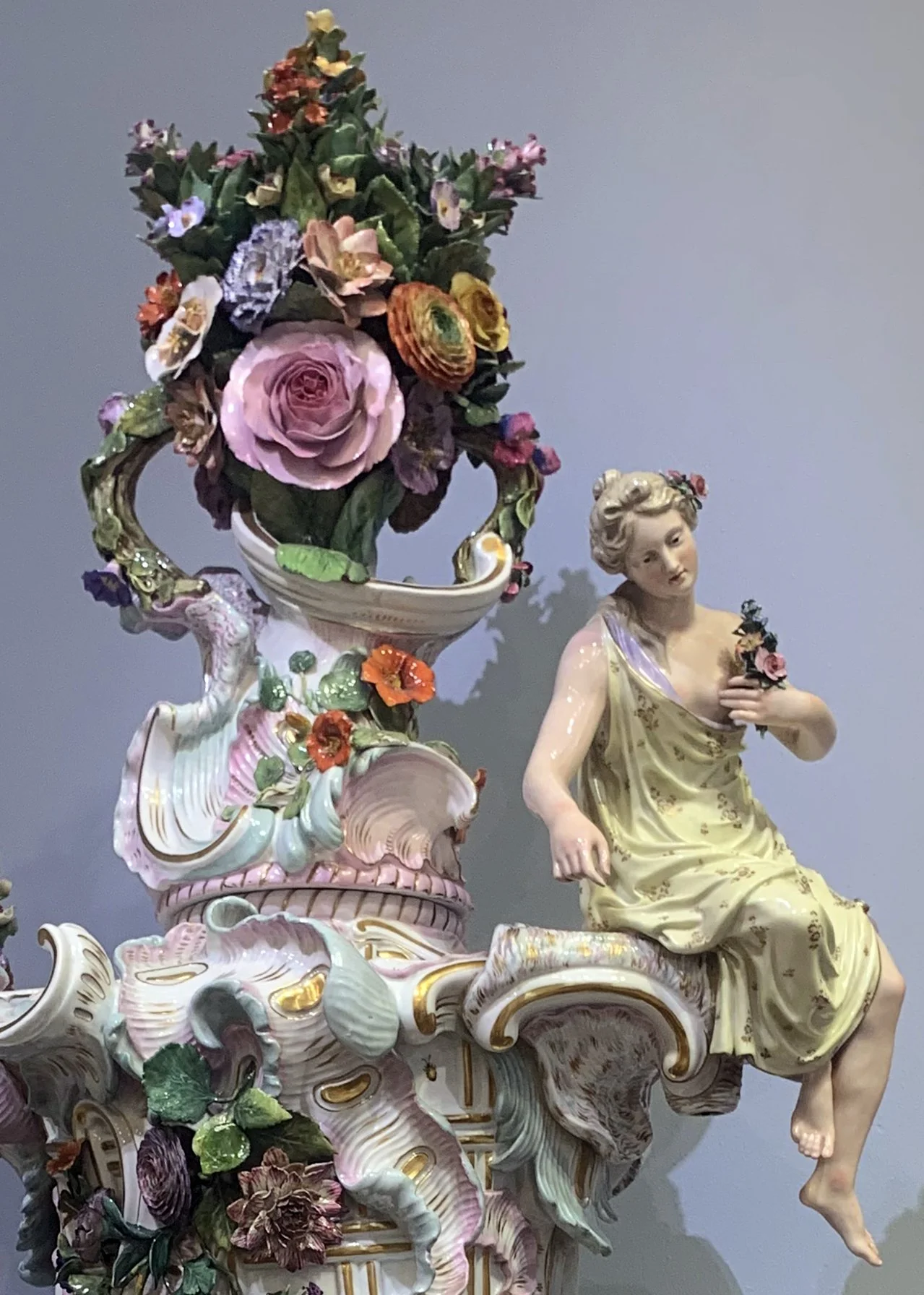Arts of Seeing
Downstairs house extension designed by Sir Leslie Martin, 1970.
ALL IMAGES Kettle’s Yard, University of Cambridge. Photography: Paul Allitt
Perhaps as a consequence of spending so many hours recently in museums and galleries, in historic houses, and in thrift stores (intermingled, characteristically, with big brand stores along the high streets of British towns), I have been trying to sort through my thoughts about the operations of domestic aesthetics, place-making and the complex, aspirational roles that objects play in everyday life. These thoughts are fed by my monthly, admittedly often envious, scouring of glossy, image-laden “shelter magazines” (World of Interiors and House and Garden, to name but two of my favourites). These wanderings are augmented by my persistent Googling of various national and local real estate listings—in both Britain and Canada—in what I know to be the rather-too-widely-shared hope of finding some available, affordable, near-derelict, but idyllic stone cottage in a field away from people and bustle that needs my particular care and attention.
This is all part of a larger questioning of material life, visual pleasure, the alchemy of contentment, and the ways that each of us seeks to make homes for ourselves. Filled with the accumulation of lifetimes and defined by the arrangement and re-arrangement of things—putting wild flowers in a pottery jug from the cupboard, hanging a picture, setting the table for a family meal—possessions in domestic spaces not only operate as tools, but also represent the consequences of creativity, of material transformation. In similar ways, possessions function as markers for the passage of time, as mementos and keepsakes, as objects of pride, embodiments of status, and as things of personal consequence. Accordingly, while the construction of personal space is always about identity and the quest for safety and contentment, the making of a home is also about the arguably innate human impulse to settle and to nest. Such activities—putting things in place or changing the order of things out of aesthetic necessity, the fashioning of personal and quasi-public space—constitute the tangible expression of character. The creation (even curation) of a room constitutes the oft-repeated, seldom-ever-finished performance of selfhood in which objects function as extensions of character and class, and serve as props in the theatre of domestic life.
Scholars ranging in scope and disciplinary tone have looked at these ideas: sociologist Erving Goffman writing about the dramaturgy of the everyday, Henri Lefebvre framing his historically materialist concepts of habitus and social space, and psychologist Mihaly Csikszentmihalyi’s investigations of the ideological and affectual importance of objects in the day-to-day negotiations of existence and a person’s aesthetic sensibility.[1] Accordingly, the decisions made around how best to display a cherished heirloom or keepsake, or how to arrange the furniture in a living room, are creative and meaningful acts that both reveal character and affirm it.[2]
The claiming of space is always an act of creation and one of critical engagement with memory, aesthetics, and ideas. In fact, it could be said that every time a person puts an object on a table or a shelf for display, such is the declarative act that it is the culmination of a person’s tastes, spatial awareness, relationship with possessions, with history, with beauty, with their sense of self. Far more than simply the decorating of a room, the performance of place-making is integral to being, and one’s awareness of self in time and place. Written in 1964, the critic and art historian Mario Praz’s autobiography The House of Life is an idiosyncratic and arguably unmatched effort at explaining one’s personal and familial history through a discussion of the creation of a home: in this case, his grand and lavishly outfitted apartment in Rome.[3] Critically acclaimed at the time of its publication, and still considered a brilliant study on the aesthetical dimensions of life, Praz’s book uses the anthropocentric modelling of domestic architectural spaces (the social and bodily needs accommodated by specific types of rooms) as the figurative structure—the narrative architecture—in order to tell his life story. He recounts events in his life—his study of law, his interests in classicism, his marriage and domestic happiness, his connoisseurship and collecting habits—providing detailed commentary on the objects that share his space (their provenance and significance and his rationales for their acquisition and their careful placement). The reader is guided through Praz’s fascinating and accomplished life while at the same time learning about the objects and their existence as cultural entities and extensions of his life history, intellectual work, and sense of self in the world.[4]
House extension, upstairs, designed by Sir Leslie Martin, 1970.
While in Cambridge recently I made a pilgrimage to Kettle’s Yard, the remarkable home of the late Harold (“Jim”) and Helen Ede. It is a well-known, revered, and rightfully fabled place. Constituting a compelling exercise in the creation of a habitation, the Edes’ house was the answer to the couple’s desire to settle after living busy and itinerant lives. Jim Ede was trained as an artist first at the Newlyn School and then at the Slade, worked as a curator at the National Gallery, left Britain for Morocco where he and Helen built a house on the outskirts of Tangiers and lived until 1952. They travelled extensively in the States giving lectures, and made the decision in 1956, while living in the Loire Valley, to return to Britain and live in Cambridge.
Dating from 1957 as a domestic project—what Jim Ede described as his desire to creative “a living place where works of art could be enjoyed”—the house was created out of the knitting together of four 17th- and 18th-century buildings regarded by city authorities as slums. From the outset, the Edes imagined their assembled house as a sanctuary for people and possessions. For while it was to be their home, its development and realization (the transformation of the cottages) was defined by the couple’s desire to have it accessible, a place “where young people [meaning Cambridge undergraduates] could be at home unhampered by the greater austerity of the museum or public art gallery and where an informality might infuse an underlying formality.”[5] The house was expanded in 1970 with a two-storey modernist addition by the Cambridge-based architects David Owers and Leslie Martin. The Edes were aided in their ongoing project of place-crafting by their shared, well-honed, aesthetically sophisticated temperaments. Indeed, a visit to the airy, light-filled, and carefully arranged and connected rooms is an exercise that invites a type of happy envy—meaning the recognition of being in such a special place defined by the exquisite arrangement of books and paintings and furniture and things, and in reflecting on the possibilities of finding balance and visual harmony in the crafting of one’s own space.
One moves from the first, two-storeyed part of the house—the oldest, and original collection of buildings have rooms for sitting and looking at the garden, for eating (a curious and pleasing nook of sorts) the bedrooms (modest and quiet). Anywhere one’s gaze settles, it finds some perfect arrangement of shapes and materials and forms: a spiral of perfectly arranged and graduated white beach stones on a low pine table sitting in the window overlooking the garden, a bowl of lemons (their bright colour a punctuating presence in a room of pale wood and white walls), a pair of Georgian decanters placed with care on the top of a wood cider press, a Lucie Rie bowl on a coffer chest, and so on. Everywhere the eyes fall there is a type of reward. Everywhere there is beauty: distinguished things and ordinary things placed and situated so as to create landscapes and vistas that are perfect, balanced, and enduring. The compositions that define the Edes’ house function as containers and tableaux that manage to reveal and affirm the desire, if not vulnerable need, to make one’s surroundings pleasing and meaningful. Idiosyncratic, quirky, and admittedly rarified, the house communicates powerfully the role of the quest for beauty in life. Here, the idea of creating a space of one’s own that is signifying, resonant and substantive is on fine display.
Filled with furniture of different periods and styles, from Jacobean to Danish modern (weathered pine tables, mahogany chests, and low-slung teak sofas with oatmeal-coloured linen upholstery, not to mention any number of assorted and perfectly situated chairs) the Edes’ house is intimate, warm and vastly appealing. With its distinguished collections of artworks by Henri Gaudier-Brzeska, Max Ernst, Ben Nicholson, Barbara Hepworth, Frank Auerbach, and Christopher Wood, among many others, so the house achieves the Edes’ wish for the place to be at once informal and a place of ideas and learning. For as one moves through the house—from the “cottages” to the various named spaces (the “Bridge and Dancer room”, “the Bechstein room,” and so on) toward the library—in many ways the textual encapsulation of the Edes’ entire life project—the joy of having accepted the invitation to visit, to look, and to ponder, takes on a hint of the melancholy. This condition is as much tied to the fact that departing the space is unavoidable and draws close (furthering the desire to inhabit the house, or one similar to it of one’s making, subtly underscoring that this is unlikely) and that the house—both beautiful and generous and elegiac—is so clearly the result of constant tending by its thoughtful, visionary occupants. And perhaps this is the most valuable of the Edes’ gifts: an invitation to think about the domestic space and the expression of the self and the results that can endure.[6]
The author wants to thank Eleanor Castello of Kettle’s Yard for her kind assistance with the images of Jim and Helen Ede’s house.
[1] See, for example, Erving Goffman, The Presentation of Self in Everyday Life (New York: Penguin House, 1956); see also Henri Lefebrve, Critique of Everyday Life (London: Verson Books, [1947] 1992); and see Mihaly Csikszentmihalyi, “Why we need things,” in History from Things: Essays on Material Culture, ed. Steve Lubar (Washington, DC: Smithsonian Institution Press, 1993), 20–29.
[2] There are numerous popular and scholarly studies of domestic aesthetics and their assorted modes. For one important example, see Leonard Koren, Wabi Sabi for Artists, Designers, Poets and Philosophers (Point Reyes, CA: Imperfect Publishing, 1994).
[3] See Mario Praz, The House of Life, trans. Angus Davidson (London: David R. Godine Press, 1964).
[4] For a discussion of Praz’s work, written a year after his death in 1982, see Hugh Honor, “From the House of Life,” The New York Review of Books, 3 March 1983, http://www.nybooks.com/articles/1983/03/03/from-the-house-of-life/.
[5] Jim Ede, “Foreword,” Kettle’s Yard: House Guide (Cambridge: Cambridge University Press, 2017, revised 2018), 4.
[6] To learn more about the Edes and their life at Kettle’s Yard visit www.kettlesyard.co.uk. In particular, listen to the series of audio recordings under the heading “ReCollection: Oral History Archive,” www.kettlesyard.co.uk/collection/recollection/.
TOP LEFT House cottages, downstairs, dining room
TOP RIGHT Downstairs house extension, designed by Sir Leslie Martin, 1970
BOTTOM House cottages, downstairs,Jim Ede’s bedroom table
This article was published in the Fall/Winter 2018-19 issue of Studio Magazine











